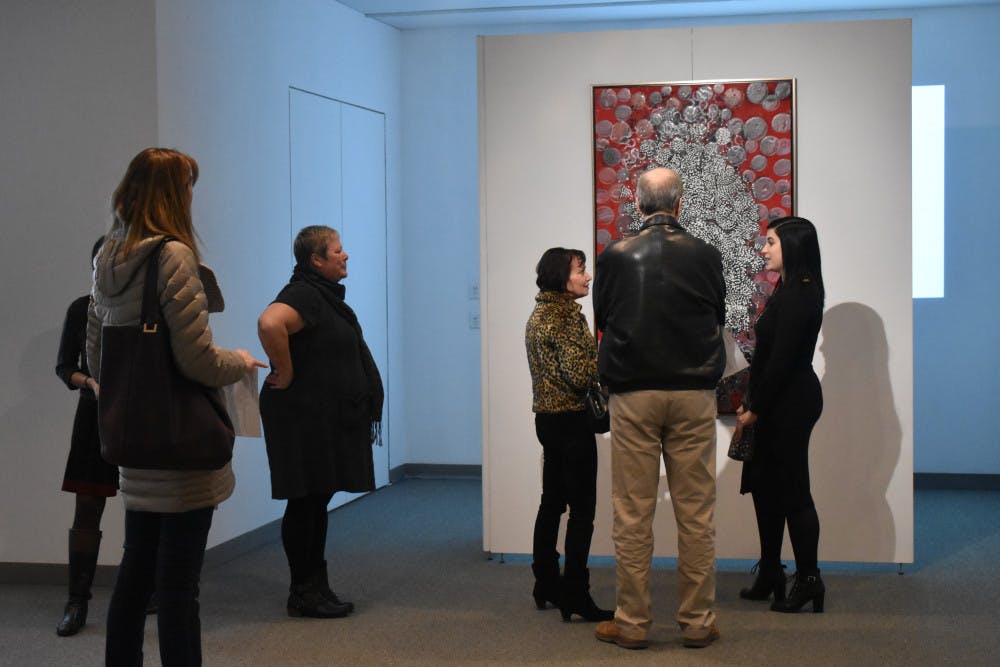An art exhibit at the Walsh Gallery is combining the aesthetics and principles of both art and science. The exhibit, titled “Strange Attractors,” offers visual works that foster potential new solutions for global problems, according to its website.
Marie Leone/Staff Photographer
“We have gotten to a point where we’ve exhausted mechanical solutions,” Jeanne Brasile, director of the Walsh Gallery, said. “We really need to start thinking about other ways we can implicate technologies.”
Brasile explained that the inspiration for the exhibit came from a series of events in New York City. “The exhibition is actually the outgrowth of a conference that was organized by Taney Roniger,” she said. Roniger is currently a faculty member at the School of Visual Arts.
Brasile said a year ago, “Strange Attractors” was first organized as a symposium and conference with an online component. All of these works are now currently exhibited in the Walsh Gallery, and according to Roniger’s website, because of the wide success and critical acclaim of the original symposium, the exhibit made its way to campus.
The exhibit features pieces like vanity stills in a petri dish and others that explore the impact of nuclear satellite debris in space. Brasile said the exhibit provides viewers with a momentary pause to reflect on the combined force of art and science in the face of worldwide issues.
“A sense of wonder and mystery is capable of stopping the mind momentarily,” Daniel Hill, a showcased artist at the exhibit, said. Hill said his work can be openly interpreted based on a person’s viewpoint and what makes artwork noteworthy to that individual.
“The human brain is wired to reflexively respond to light and motion,” Hill said. “If a painting can pull the attention of someone from their phone for just two seconds, it is an accomplishment.”
Many of the pieces displayed are not created by professional artists by trade, but rather professors and researchers at different universities.
“My motivation to create art is to communicate something and to educate about a topic that I find interesting and fascinating,” said Elaine Reynolds, an associate professor at Lafayette College.
The pieces created by Reynolds and artist Michael Hadley focus on the subject of biology and visual arts to invite visitors to think about food supply in the world, particularly soy.
“We are going to have to look for more innovative solutions that bring people together from different disciplines to get to the next level, to continue this rate of progress we have currently,” Brasile said.
From the origami visualizations to dioramic pathogens emerging from the walls, Brasile said the exhibit not only explores innovative solutions, but creative artistic representations. “This exhibit, especially, I got a lot out of it,” Alexandra Cittadino, a senior visual and sound media major, said. “It’s something that I have never seen before.”
Ultimately, Cittadino said that the exhibit is designed for people to leave thinking and asking different questions then the ones they had coming in.
Cittadino said, “There’s nothing worse than going to an art gallery and getting nothing out of it.”
Adam Varoqua can be reached at adam.varoqua@student.shu.edu.





